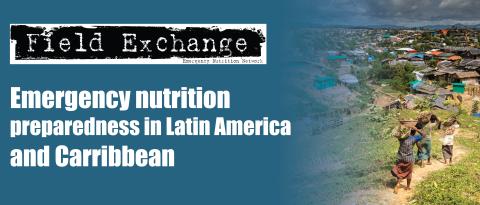The Lancet series on the double burden of malnutrition
Research snapshot1
The double burden of malnutrition (DBM) is the coexistence of overnutrition (overweight and obesity) alongside undernutrition (stunting and wasting), at all levels of the population –country, city, community, household and individual. This four-paper series in The Lancet explores how this coexistence is affecting low-income and middle-income countries (LMICs). Malnutrition in its many forms has previously been understood and approached as a separate public health issue, but the new emergent reality is that undernutrition and overnutrition are interconnected and, therefore, double-duty actions that simultaneously address more than one dimension must be implemented for policy solutions to be effective.
Dynamics of the double burden of malnutrition
The first paper, by Popkin et al (2020) explores the dynamics of the DBM in LMICs, based on repeated household survey data from the 1990s to the 2010s in multiple countries. Findings show that, in LMICs, trends in stunting, wasting and thinness in women are declining, while overweight is increasing in most age groups. This has been accelerated by shifts in the food system; particularly the availability of cheap, ultra-processed food and beverages, coupled with more sedentary lifestyles. As a result, LMICs face a new nutrition reality that requires greater understanding to inform effective policies to address the issue of the DBM at all levels.
Aetiological pathways of the double burden of malnutrition
The second paper, by Wells et al (2020), explores aetiological pathways of DBM that affect individuals across life courses and generations. The authors attribute the long-lasting effects of malnutrition in early life to interconnected biological pathways, including imbalance of the gut microbiome, inflammation, metabolic dysregulation and impaired insulin signalling. An increasing proportion of individuals who are overweight were undernourished earlier in life and in these individuals the health costs of obesity (including non-communicable disease) are exacerbated. Population susceptibility to DBM can be mediated by societal driving factors (rapidly changing diets, norms of eating and physical-activity patterns) and broader ecological factors such as high burdens of infectious disease and extrinsic mortality risk. The authors conclude that focusing on how our biological plasticity was shaped in ancestral environments to promote survival and reproduction might help design interventions that promote linear growth and lean-tissue accretion, rather than excess adiposity.
Double-burden actions
Actions to address different forms of malnutrition are typically managed by separate communities, policies, programmes, governance structures and funding streams. The third paper, by Hawkes et al (2020), presents double-duty actions that, by contrast, simultaneously tackle all forms of malnutrition in a more holistic way, based on the rationale that all forms of malnutrition share common drivers that can be leveraged for double impact. These actions include interventions delivered through health services, social safety nets, educational settings, agriculture, food systems and food environments. Fundamental changes will be needed in governance, funding, capacity and research to enable the delivery of this strategy, and existing nutrition-coordination mechanisms must now incorporate malnutrition in all its forms and one minister or ministry made responsible for all.
The authors articulate concerns about the potential risks of intakes of ready-to-use therapeutic foods (rapid weight gain leading to excess adiposity later in life, effect on the gut microbiome and taste preferences, household sharing and displacement of nutrition counselling). Research on the long-term effects of regular use of supplements in early life is needed to better evaluate the risks, although no alternative product that is equally safe, convenient and effective for treating severe acute malnutrition in the community is currently available.
Economic effects of the double burden of malnutrition
Health effects from the DBM have an economic cost for individuals and economies in the form of lost wages and productivity, as well as greater medical expenses. In the final paper in this series, by Nugent et al (2020), the authors summarise existing approaches to modelling the economic effects of malnutrition and point out the weaknesses of these approaches for measuring economic losses from DBM. Findings show that most economic models of malnutrition evaluate costs and outcomes associated with either stunting or overweight and obesity, but not both. None of the models captures interactions between undernutrition and obesity, which could either diminish or exacerbate the combined effects compared to effects when only one form of malnutrition is present. In the absence of a combined model, the authors suggest that adding up the separate economic effects of undernutrition, and overweight and obesity, is a second-best approach to measuring the economic effects of the double burden of malnutrition.
An economic analysis of the costs and benefits of an illustrative double-duty intervention was undertaken, which showed significant benefits of implementation that outweighed the costs, with return on investment between 1:1 and 4:2. Removing either form of malnutrition from the analysis would have lowered the return on investment. This illustrates how important it is that economic models are modified to incorporate effects for both undernutrition and overweight in the same population.
Endnotes
1 https://www.thelancet.com/series/double-burden-malnutrition
References
Barry M Popkin, Camila Corvalan, Laurence M Grummer-Strawn. Double Burden of Malnutrition 1: Dynamics of the double burden of malnutrition and the changing nutrition reality. Lancet 2020; 395: 65–74
Jonathan C Wells, Ana Lydia Sawaya, Rasmus Wibaek, Martha Mwangome, Marios S Poullas, Chittaranjan S Yajnik, Alessandro Demaio. Barry M Popkin, Camila Corvalan, Laurence M Grummer-Strawn. Double Burden of Malnutrition 2: The double burden of malnutrition: aetiological pathways and consequences for health. Lancet 2020; 395: 75–88.
Corinna Hawkes, Marie T Ruel, Leah Salm, Bryony Sinclair, Francesco Branca. Double Burden of Malnutrition 3: Double-duty actions: seizing programme and policy opportunities to address malnutrition in all its forms. Lancet 2020; 395: 142–55.
Rachel Nugent, Carol Levin, Jessica Hale, Brian Hutchinson. Double Burden of Malnutrition 4: Economic effects of the double burden of malnutrition. Lancet 2020; 395: 156–64.


